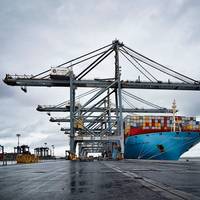Britain Reviewing Risks to its Satellite-Reliant Infrastructure

Britain is reviewing its reliance on satellite-based technology for critical infrastructure including the Global Positioning System (GPS) as the threat of jamming attacks and disruptions grows, a government report said on Tuesday. Emergency services, transport, communications and financial networks are among key sectors which depend on Global Navigation Satellite Systems (GNSS) such as GPS. Such technology needs accurate and reliable position and timing signals. Experts say the problem with GNSS is their weak signals…
Technology Qualification on the Route to Autonomy

ABS weighs in on the way forward for marine autonomous systems and navigation technology. The era of digitization and hyper-connectivity is taking the maritime industry on a journey as it transitions from ‘smart’ to remotely operated and then, to autonomous vessels. The OSV sector – and offshore workboats in general – may well be leading that transition, with some projections for remote-controlled vessels as soon as next year. Many new technologies (sensors, navigational systems…
'World's First Hybrid Superyacht'
Developed by Dutch shipbuilders Feadship, the 83.5m Savannah is touted as the world's first hybrid super yacht. Vessel is 30% more fuel efficient than similar sized counterparts, claims the company. The eco-friendly super yacht uses a blend of a single diesel engine, three gensets, batteries, propeller and an azimuth thruster. The model comes as a result of the 2010 Feadship Future Concept Breathe, demonstrating a cleaner and more cost-effective mode of propulsion. With a dynamic and streamlined hull shape, Savannah uses one efficient medium-speed Wartsila main engine instead of two higher-rev diesel motors, a single central propeller shaft installation on the centreline and three gensets.
Market Report on High Altitude Wind Energy
The world’s demand for safe and clean energy continues to grow, with renewable sources playing an every greater role. Wind power generation, having expanding offshore, is now not only looking out but up. International renewable energy consultancy, GL Garrad Hassan, has issued the first market report which analyses the burgeoning new industry of High Altitude Wind Energy (HAWE). HAWE systems are designed to tap into the high velocity, stable air currents that exist at altitudes anywhere from 200m to 20 km above the earth; a source for generating cheaper and more abundant electricity than current wind technology. The report looks at the potential of high altitude winds as an energy source, the current technologies within the sector and their potential as mature systems.





